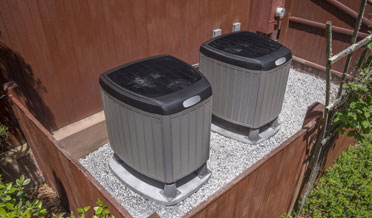New AC Installation: The Benefits Are Worth It
Purchasing a new heating, ventilation, and air conditioning (HVAC) system or replacing an aging, failing one offers several advantages for homeowners. Central heat and air conditioning became prevalent in the 1960s and with each decade the system components have improved. Some of the new technologies might surprise homeowners as they purchase the latest, cutting-edge system to enhance their homes.
AC Installation: Energy Efficiency Upgrades
- Heat pump technology. Air conditioner systems use a process called heat transfer. Technically they do not cool the indoor air but move heat from inside the home to the outside. Heat pumps reverse this process during the wintertime, moving heat from the outside to the inside of the home. Since the system does not generate heat to move about the house, it is much more energy efficient.
- New refrigerants. Air conditioners use a chemical formula, often called Freon, to efficiently transfer heat. Some of those formulas have been determined to be harmful to the ozone layer. There is a constant search for the most effective, least harmful refrigerant. The current Freon formula is much more efficient than the formula developed 30 or 40 years ago.
- Variable speed motors. HVAC systems utilize two types of motors—a compressor motor and a blower motor. Watch for variable speed options for both motor types with efficiency advantages. Sensors compare indoor and outdoor temperatures and request these motors run at the best percentage of function for the need. An outdoor temp of 78 degrees requires a different response than 99 degrees. Some components can vary between 25 and 100 percent capacity. Variable speeds provide great comfort, save energy, and extend the life of important components.
AC Installation: Comfort Upgrades
If you have not taken advantage of Smart thermostats, installing one with a new HVAC system will give a homeowner great control of comfort and is much more convenient. Thermostats serve to turn the HVAC system on and off. When the indoor temperature changes from the comfort setting on the thermostat, a circuit opens and the system engages. When the desired temperature is reached, the circuit is broken and the cycle ends. However, a Smart thermostat:
- Is programmable, making temperature adjustments automatic.
- Can be accessed on the wall like a normal thermostat, or via a cellphone app. This allows a homeowner to make changes on the fly when the family schedule changes.
- Computes efficiency and energy cost to give homeowners the information tools needed to save energy/money.
AC Installation: Air Quality Upgrades
- HVAC systems use air filters to remove airborne contaminants from the air and dispose of them permanently. Even poor-quality filters collect more than 80% of these particles; good-quality filters for home use can remove as much as 95% of common contaminants.
- Scientists are putting sunburns to work to improve indoor air quality. The electromagnetic rays that produce sunburn are ultraviolet light (UV). These same rays damage the nuclei and cell membranes of organic contaminants, such as pollen, mold spores, and dust mites. UV lights can be installed inside the ductwork and keep the indoor air much safer for families.
Let Doctor Cool Help With Your New AC Installation
When you are ready for a New AC Installation, come to the name the Texas Gulf Coast trusts, Doctor Cool & Professor Heat. As an award-winning, BBB-accredited AC Installation contractor serving the League City and surrounding area, we pride ourselves in providing exceptional service to our customers. Call Doctor Cool & Professor Heat today at 281-338-8751 or email Doctor Cool.

